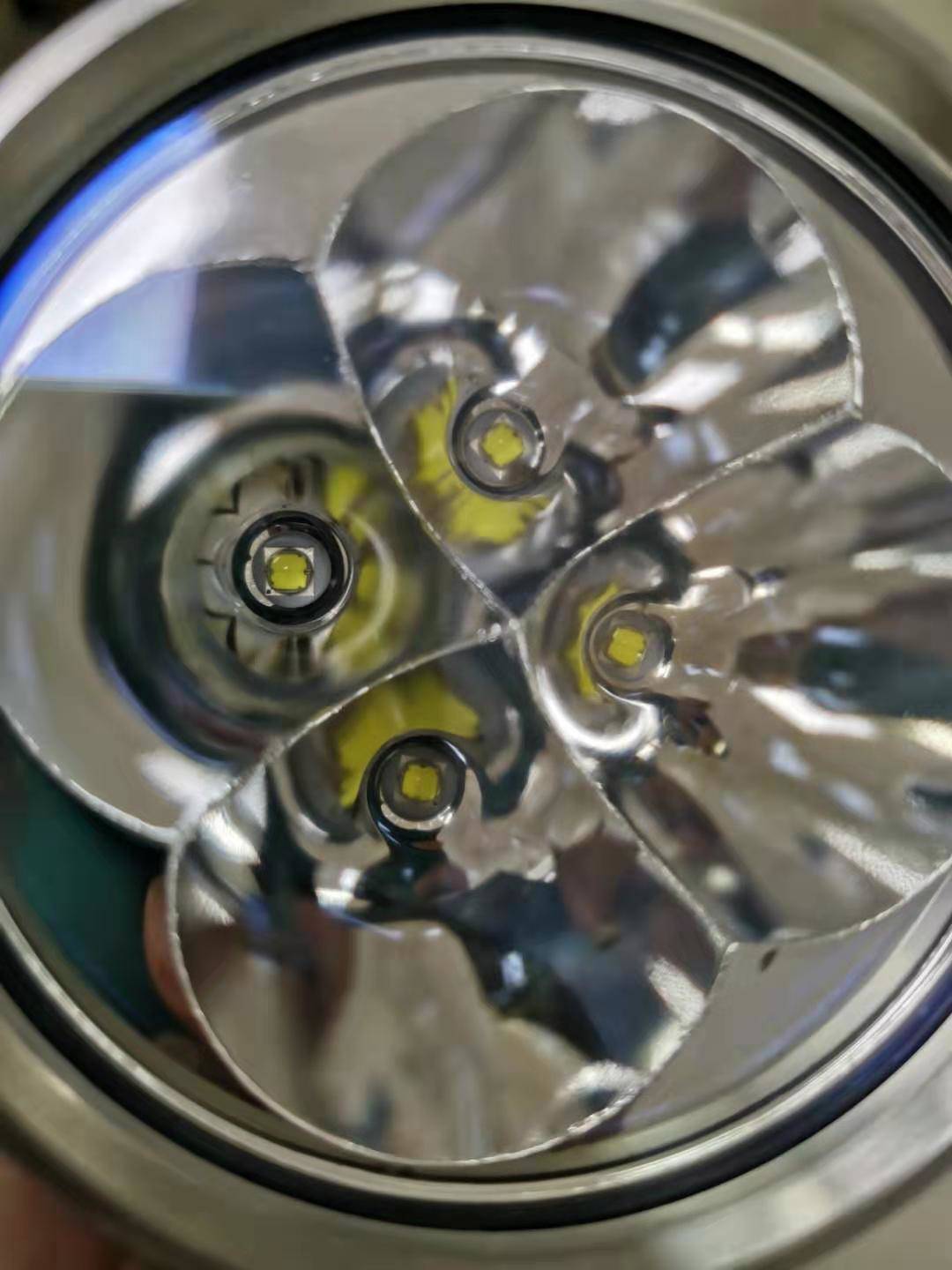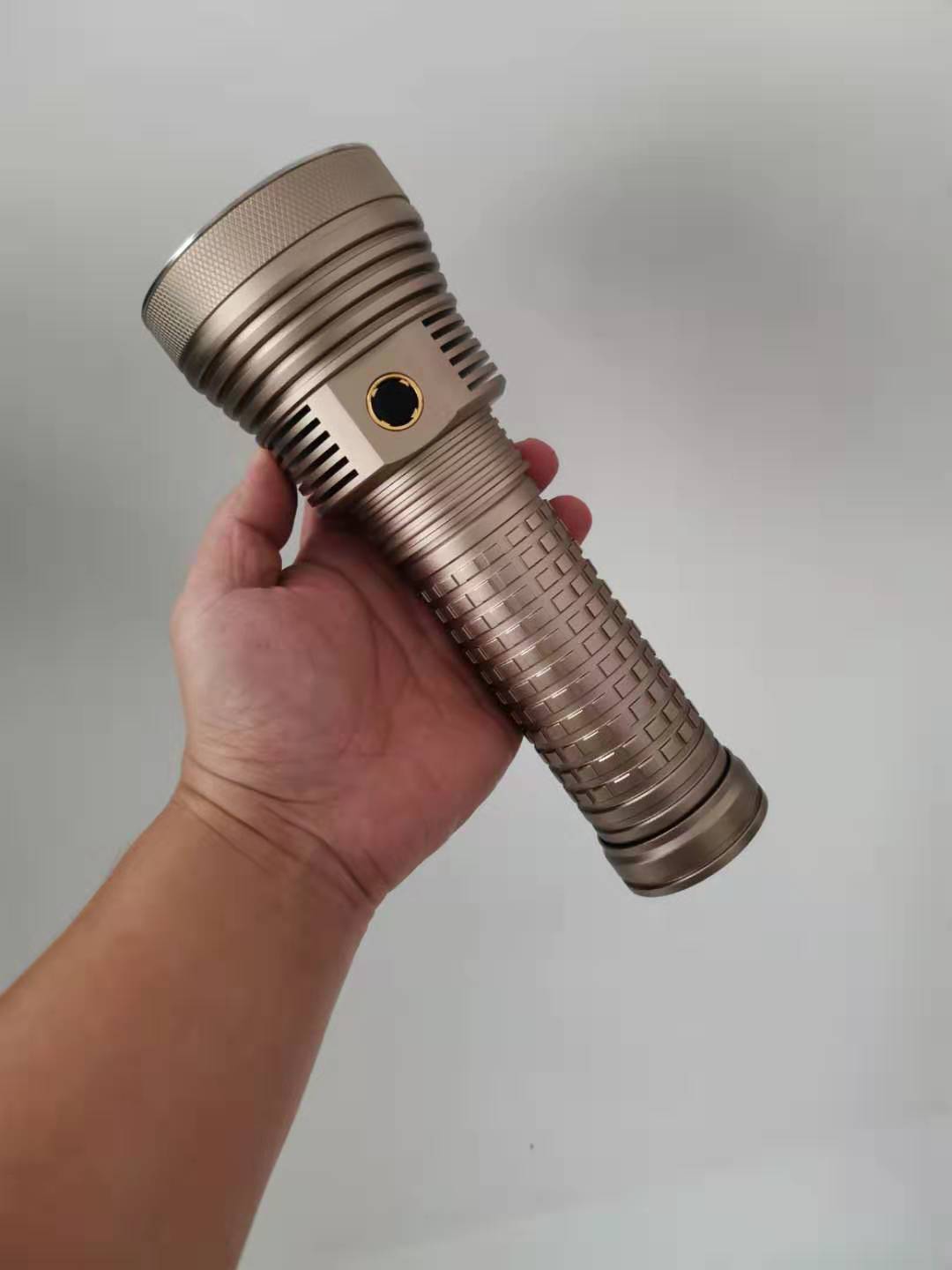


Thanks to Jacky from LuckySun who got his hands on some samples, and to TheOnlyDocc who negotiated to get one sent to me for testing, I received one Of the new SST-70 leds from Luminus. There is no datasheet yet as far as I know as the SST-70 is at this moment not even listed on the Luminus website yet (it does show up in their design files though).
Edit nov17,2020: datasheet popped on the Luminus website:
https://download.luminus.com/datasheets/Luminus_SST-70X-W_Datasheet.pdf
It is a XM-size (5050) 6V/12V quad die led and is thus a direct replacement for the Cree XHP50. The die size however is smaller, even closer to the XHP35 than the XHP50. Let's see how good it is.
First some comparison pictures, left with Nichia 144A, XHP50.2 and XM-L2, right with XHP50.2 and (a warm) XHP35 hd (the version with a dome):


Beam and tint
I placed two reflectors on top of the led running at 1A and looked at the beam on the ceiling two meters away (the distance is not ideal but it gives a good idea). Left with S2+ reflector (small OP), right with an X6 reflector (bit throwier smooth). In both reflectors the SST-70 produces a fine beam, no donut holes, no Cree rainbow. The photo's are underexposed to show the hotspot well.


The CCT of my sample is around 6000K (depending on how it is measured, I can not measure integrated tint like maukka can, the hotspot from a reflector is 5900K), and CRI is 67.
Performance
The output test was done like most of my emitter tests over the last years. I described it in detail in my XP-L test (found via my sigline), with the minor difference, that should not matter significantly for the results, that I used my Integrating sphere no. II instead of no. I.
In summary: 1) just one led of each type was tested, reflowed on a DTPcopper board 2) I used my large version II integrating sphere with high quality luxmeter, 3) the output numbers and voltages were measured with the led close to ‘steady state’ for each current, so warmed up and settled (I take a minute before each current increase), you should be able to get these numbers in a well heatsinked flashlight. Mind that these are output numbers of the bare led; in a flashlight there will be losses from light obstructions, lens and optic, 4) output is in ‘djozz-lumen’ defined as 1/550 of the output of my Sunwayman D40A on high setting, which I hope is close to the real lumen (recent comparisons show that it is actually between 7 and 11% high), but at least is consistent over all my previous emitter tests done in integrating spheres, so all my output data over the past years can be directly compared.
I added old data of a Cree XHP50.2 in the graph for comparison. Mind that in the meantime better output bins than J4 are available, KD sells K2 bins of the XHP50.2 atm.

What can be seen?
*this SST-70 led performs similar to a tested J4 bin of the XHP50.2 although at higher currents the output levels out sooner.
*but with its die surface area of (estimated from the pics) only 55%-60% of a XHP50.2, the throw will be significantly better. The throw will not match a XHP35 hi (the domeless led), but my guess is that it is not really far off, and with 80% more output. If one manages to dedome the SST-70 succesfully, the XHP35 will be beaten in throw, and with 50% more output (this is all my guesstimation).
*I stopped the test at 10A where the output was already dropping, to save the led. A few days later I did a quick voltage/output check and the led did not perform less than at the time of the test.
*my performance hotspot for this led would be 6A/4000 lumen.
Conclusion:
Looks like a great led, time will tell if it will deliver what this test promises.
And please Luminus bring us the 3V version!

 good led
good led
 Another leaked photo from haikelite.
Another leaked photo from haikelite.
